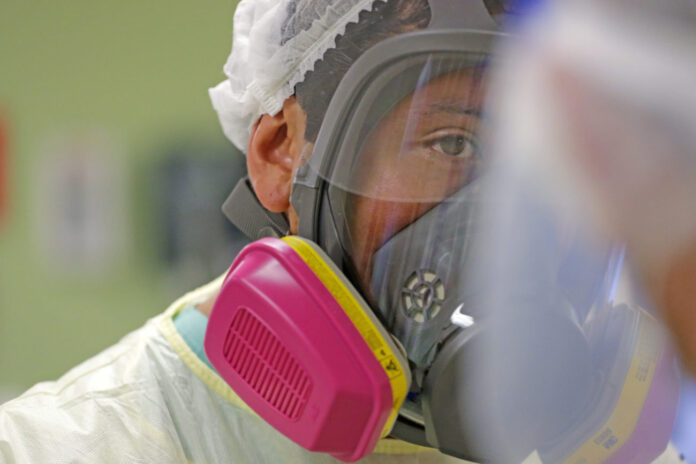
COVID-19 hospitalizations have decreased overall in the Rio Grande Valley in the last few weeks and especially when it comes to general virus beds. But while there has also been a decline in hospitalizations among those in intensive care units, that change has been slight.
What’s constant is the threat of the virus remaining ever deadly and infectious as hospital systems and local officials continue efforts to control its spread, even amid a drop in activity.
Since the Rio Grande Valley reached its peak in hospitalizations on July 22 with 1,606 patients, the numbers have dropped by 42.8% to 918 patients on Aug. 15, according to data collected by the Department of State Health Services.
When it comes to general beds, the numbers dropped by more than half, 59.2%, peaking on July 24 with 1,224 patients and dropping to 499 patients as of Aug. 15.
With regard to the number of COVID-19 patients in the ICU, it continues to fluctuate from the mid 300s to the low 400s. There were 436 patients in the ICU on July 18, the highest on record thus far, and decreased by 19% to 353 patients as of Aug. 15.
“We have less people on the regular medical/surgical COVID beds but we definitely still have a lot of very, very sick people,” said Ivan Melendez, the Hidalgo County health authority.
One explanation Melendez offered as to why the general bed population experienced a significant drop is that health providers are sending people home that aren’t that sick but, perhaps more importantly, they are able to send them home.
“Before we couldn’t get oxygen at home, now we have oxygen concentrators,” Melendez said. “We have equipment where people can actually go home that before, we didn’t have any alternative than to keep them because we didn’t have the oxygen supply that you can use at home.”

That ability to discharge patients alleviates some of that capacity but there are also other factors, Melendez said.
One such factor is that healthcare providers are better able to treat the disease than they did a few months ago.
“We’re certainly a lot better in giving people more options than we were, say, four months ago,” he said, listing Remdesivir, convalescent plasma, steroids, and anticoagulants as available treatments.
“I think that the way that we treat the disease, even though it still can be lethal, is better than it was before,” Melendez said. “Even though it’s still an incurable disease, we still have greater knowledge on how to deal with it.”
But the decline certainly doesn’t mean the virus is disappearing. In fact, by most other metrics, it is still negatively affecting the Valley community as much as it ever did.
“If you look to see the number of people coming back positive in the community, it’s still over 500 almost every day,” Melendez said, noting that Hidalgo County had a 15% positivity rate among those tested and 4% death rate among those infected.
“The numbers — after the Fourth of July and Memorial Day fiasco — started going down,” Melendez said, partly attributing Hurricane Hanna for people staying at home.
“But those people that are actually in the hospital are very, very sick,” he said. “They’re still dying in great numbers and even though we’ve plateaued, we’ve plateaued at a very high rate.”
He said the bottom line was that COVID-19 in Hidalgo County was far from over and people should not be lulled into a false sense of security when seeing numbers improving.
“I think we’re still very susceptible to having spikes and peaks in the near future,” he said.
Likely due to patterns of people getting together during long weekends, Melendez said he was concerned about Labor Day next month.

He said he’s also worried about the start of the NFL season when people like to go to each other’s houses to watch football games, and he’s concerned with the reopening of schools.
“All these activities are going to bring people together,” he said.
“We’re very social beings,” Melendez added. “This tricky virus takes advantage of that.”
He said he understood how difficult it was to stay away from people but he urged those that can maintain social distance to do so.
The county is nearing 1,000 deaths due to the disease, he reminded, and said that if it’s assumed 15% of the population have the virus, that’s close to 160,000 people.
“We’re all COVID fatigued,” he added, “we’re all sick and tired of hearing about COVID but COVID-19 in Hidalgo County is still a very serious and challenging healthcare problem that, even at today’s numbers, would still be the most severe and challenging health crisis that we’ve ever faced in this county.”




